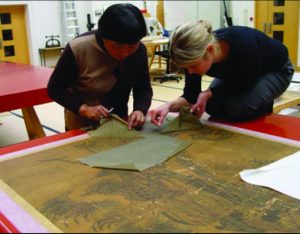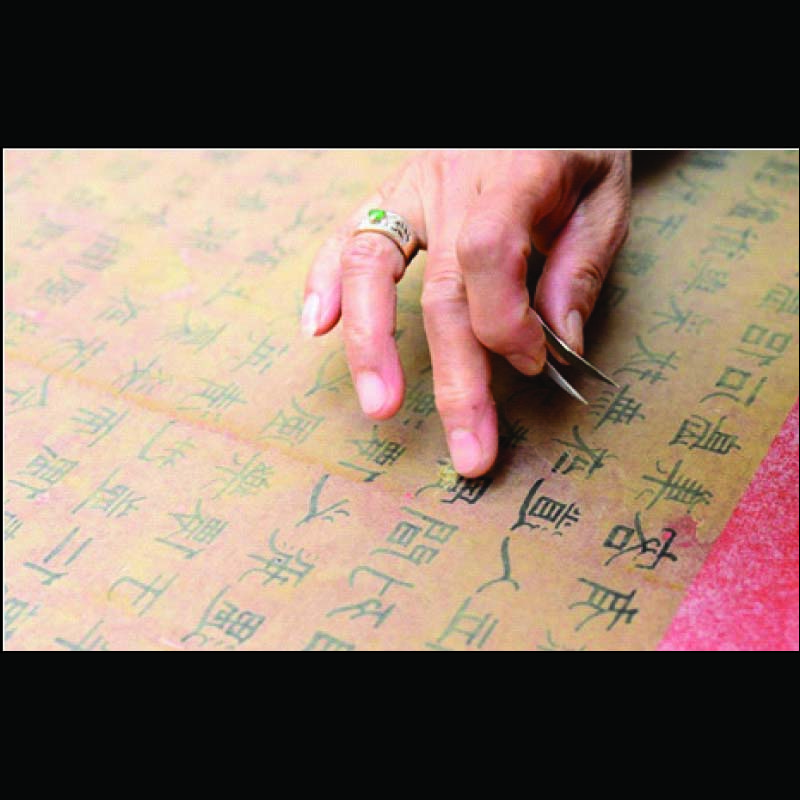
“I am supposed to carefully and meticulously treat precious cultural relics, and strive to possess the magic hands to rejuvenate the paintings, just like a doctor treating patients,” the 64-year-old woman explained at an international forum on authentication, restoration, and protection of Chinese ancient calligraphy and paintings at Renmin University of China in Beijing. “I’ve always referred to traditional techniques in my work, whether in mounting styles, colors of pigments and selections of materials.”
The process is complicated, and many details are still rooted in ancient wisdom. For example, the glue she uses is still made of starch and seaweed. The paper used to restore a painting will be dyed in soybean milk as a preparation.
No traditional Chinese mounting technique was known at the British Museum until the 1970s. Before Qiu arrived, Japanese methods were widely used to restore ancient Chinese paintings.





